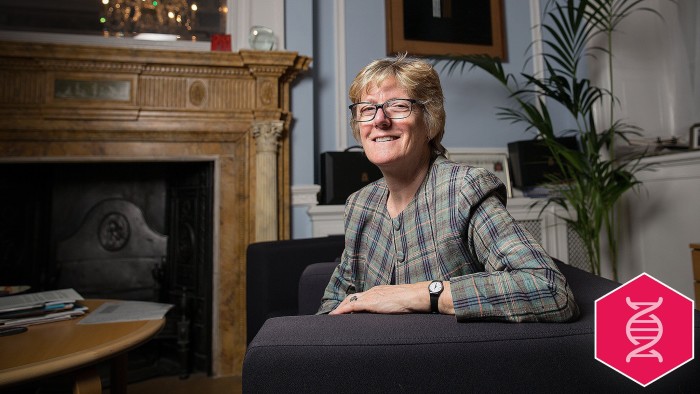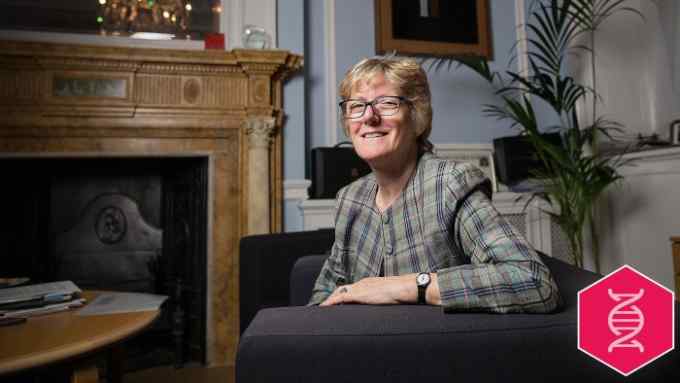Cheaper DNA sequencing unlocks secrets of rare diseases

Simply sign up to the Pharmaceuticals sector myFT Digest -- delivered directly to your inbox.
When Dame Sally Davies, England’s chief medical officer, last year vowed to “spread the genetics dream to as many people as possible”, Matthew Hurles was among a select group who truly understood what her pledge could mean.
Dr Hurles is one of the leaders of Deciphering Developmental Disorders, a study that is transforming the treatment of children with rare genetic disorders, in a way that would have been unthinkable before the advent of affordable DNA sequencing technology.
The head of human genetics at the Wellcome Sanger Institute, one of the UK’s most prestigious research organisations, says the decrease in costs by many orders of magnitude has “transformed all of our work in genetics in whatever discipline . . .[It] just makes experiments possible that weren’t possible before”.
Sequencing the very first human genome, in 2003, cost $3bn, but now the process costs just $1,000 and a number of companies are working on bringing the price down to $100.
Dr Hurles’ study involves collaborating with 24 different regional genetic centres throughout the UK and Ireland to which children with severe developmental disorders are referred if their paediatrician suspects an underlying genetic cause.
Over the course of four years, about 13,000 families have been recruited and about 32,000 “exomes”, a genomic technique for sequencing all of the protein-coding genes in a genome, have been carried out.
“We can diagnose about 35 per cent to 40 per cent of the kids that we sequence with known disorders,” says Dr Hurles. Three years ago, just 27 per cent of children were being diagnosed.
The major difference, he says, “is in new disorders that we and others have identified over that three-year period”. Lower costs have allowed a higher volume of children and parents to be scanned, sufficient numbers to allow researchers to identify which mutations are causing disease.
In an interview at the Department of Health in London, Dame Sally outlines plans for a new approach to research in the NHS. This is distinct from the traditional clinical trials in which patients may be randomly assigned to receive an innovative medicine.
If a patient gives consent to share their genome, whether through altruism or a simple desire to know more about their own condition, “experts and academics will look at it and give the diagnosis”. If patients decline to share the information, the success of their treatment may depend on whether their own medical team is up to date with the published medical literature, which may in any case be a year or two out of date.
Medical records falling into the wrong hands is a concern for many, but Dame Sally says there are “all sorts of safeguards. The data goes into what we call a reading library. So no one can come into the reading library without proper agreement that they are properly trained, they have a worthwhile study.”
When she published her annual report last July, Dame Sally said she wanted to see genomic analysis offered to patients as routinely as an MRI scan.
We will have the $100 genome . . . and we will understand, much more, what the different mutations mean. It’s going to be an exciting decade
Dame Sally Davies, England’s chief medical officer
At a time when the NHS is overstretched financially such plans may seem unrealistic, but Dame Sally insists that learning more about a patient’s genetic make up will lead to better and more cost-effective approaches to caring for patients, ultimately sparing resources in the system.
“For rare diseases, this will save money,” she says, allowing far more children with such conditions to be diagnosed. In the case of cancer, where genetic mutations can play a role in 60 per cent of patients, “you won’t be given a treatment that we know doesn’t work with that [genetic] mutation . . . saving money because we’re not using treatments that don’t work [or looking] after patients with side effects”.
She believes that over the next decade the genomics revolution will move on at an accelerated pace. “It’ll change dramatically. It’ll change because we’ve gone from the $10,000 genome to the $1,000 genome. We will have the $100 genome, or cheaper . . . and we will understand, much more, what the different mutations mean. We’re at the beginning of our understanding. It’s going to be an exciting decade.”
50 ideas to change the world
We asked readers, researchers and FT journalists to submit ideas with the potential to change the world. A panel of judges selected the 50 ideas worth looking at in more detail. This fourth tranche of 30 ideas (listed below) is about the latest advances in healthcare. The fifth and final chapter, looking at Earth and the universe, will be published on March 29, 2018.
- Gene editing
- Video: Exoskeletons for factory workers
- DNA sequencing
- Brain implants
- Nanobots to kill off tumours
- Tests to stop antibiotic resistance
- 3D printing organs
- Personalised mental health treatment
- Apps to speed surgical recovery
- Immunoncology
Storage of all this genetic data could be problematic, she acknowledges, but one that could be solved by the diminishing price tag for genetic sequencing: “It might be cheaper to say, ‘OK, we’ve found what we needed for your cancer and we can see which drugs you react badly to. Here’s that information. Destroy’. And then next time you need it, you redo it. So, I think it’s a moving platform.”
Meanwhile, for Dr Hurles, there are regular reminders of the difference his work is making to families’ lives, particularly through the discovery of entirely new conditions.
“One of the disorders that we uncovered was due to mutations in a gene called CDK13,” he says. At a conference in the US late last year, “a clinician came up to me and just said ‘one of the children I look after, we’d done the sequencing, we couldn’t find anything and then your paper came out and we realised that they had a mutation in CDK13 and the family just wanted me to let you know how grateful they were’ . . . And you realise that actually when you provide this knowledge it goes globally and it enables many more diagnoses to be made.”

Comments